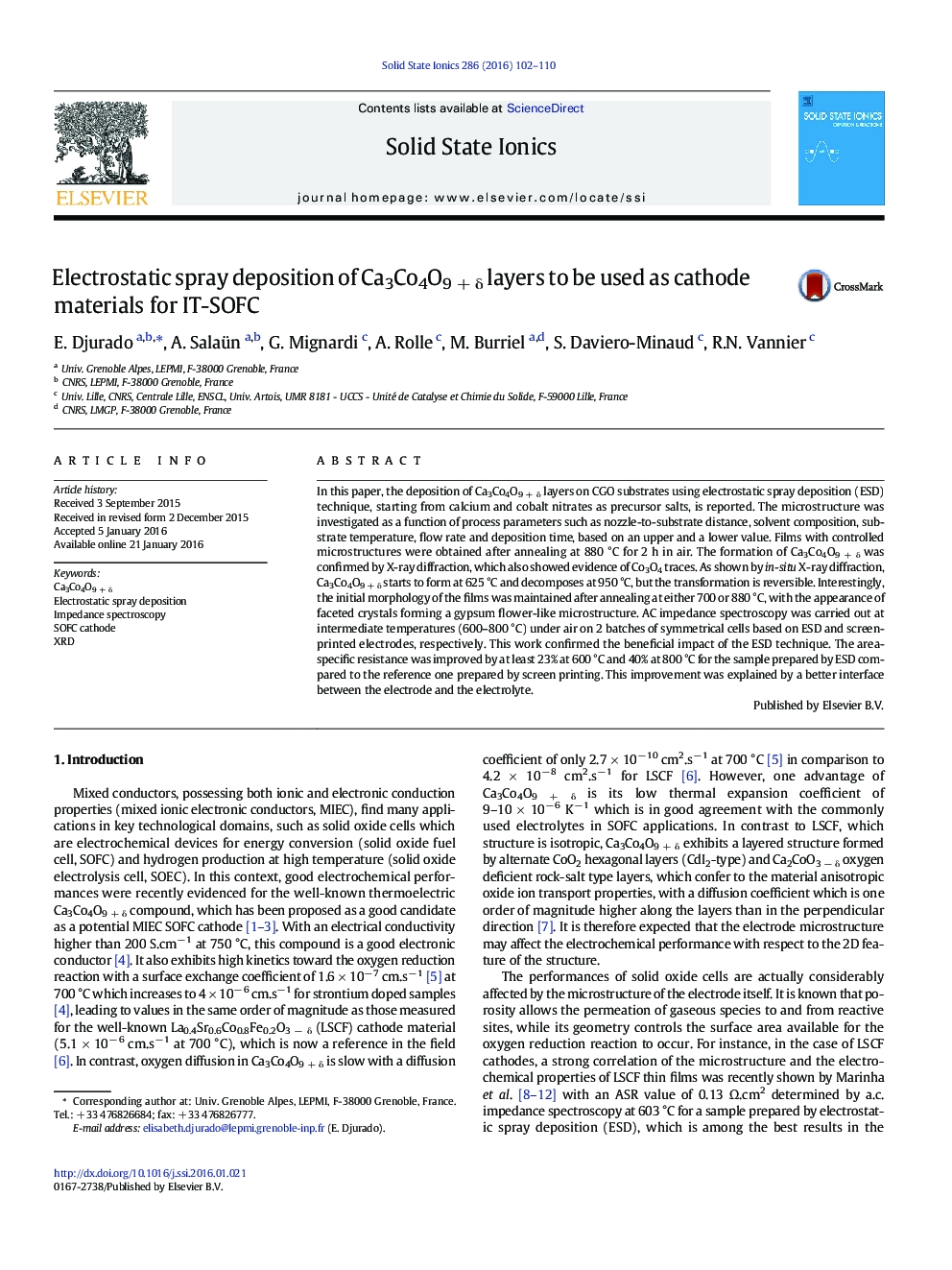| کد مقاله | کد نشریه | سال انتشار | مقاله انگلیسی | نسخه تمام متن |
|---|---|---|---|---|
| 1295596 | 1498257 | 2016 | 9 صفحه PDF | دانلود رایگان |

• Ca3Co4O9 + δ was successfully grown as a gypsum flower-like thin layer on CGO substrate by electrostatic spray deposition.
• The crystallization process was accurately investigated by in-situ XRD up to 950 °C.
• 3D coral-like cathodes, 5–55 μm thick, were obtained by varying deposition time.
• ASR improvement of at least 23% at 600 °C was reported larger for the ESD sample with comparison to the classical SP one.
In this paper, the deposition of Ca3Co4O9 + δ layers on CGO substrates using electrostatic spray deposition (ESD) technique, starting from calcium and cobalt nitrates as precursor salts, is reported. The microstructure was investigated as a function of process parameters such as nozzle-to-substrate distance, solvent composition, substrate temperature, flow rate and deposition time, based on an upper and a lower value. Films with controlled microstructures were obtained after annealing at 880 °C for 2 h in air. The formation of Ca3Co4O9 + δ was confirmed by X-ray diffraction, which also showed evidence of Co3O4 traces. As shown by in-situ X-ray diffraction, Ca3Co4O9 + δ starts to form at 625 °C and decomposes at 950 °C, but the transformation is reversible. Interestingly, the initial morphology of the films was maintained after annealing at either 700 or 880 °C, with the appearance of faceted crystals forming a gypsum flower-like microstructure. AC impedance spectroscopy was carried out at intermediate temperatures (600–800 °C) under air on 2 batches of symmetrical cells based on ESD and screen-printed electrodes, respectively. This work confirmed the beneficial impact of the ESD technique. The area-specific resistance was improved by at least 23% at 600 °C and 40% at 800 °C for the sample prepared by ESD compared to the reference one prepared by screen printing. This improvement was explained by a better interface between the electrode and the electrolyte.
Journal: Solid State Ionics - Volume 286, March 2016, Pages 102–110